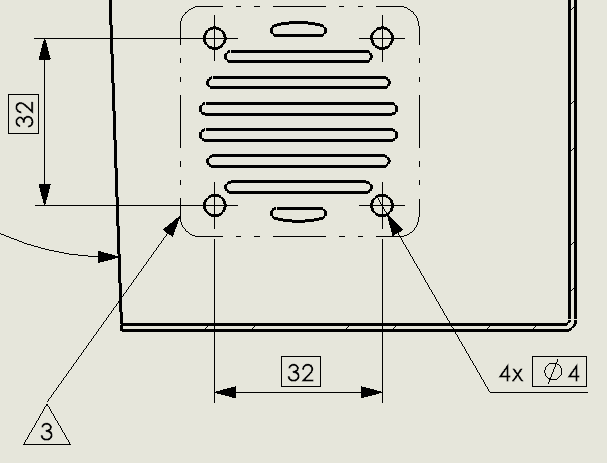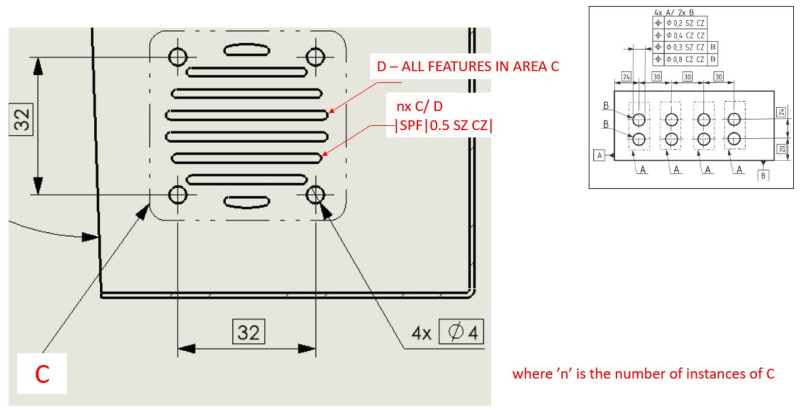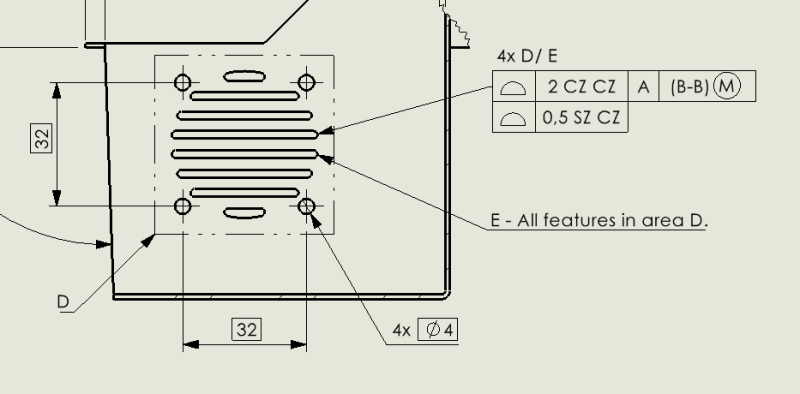pmarc said:
greenimi,
1. SIM REQT is used when multiple tolerance indicators are specified. In the discussed example, there is only one general tolerance indicator, therefore CZ is the tool to use.
2. I did not have to use all around because in my proposal 'D - ALL FEATURES IN AREA C' applies to 36 surfaces and not to 12 features (4 round holes and 8 compound holes).
pmarc,
Thank you for your answer.
Just a challenge and a learning opportunity for me: I see that your proposed solution is not MBD friendly, meaning it is not machine readable as contains a note (“ALL FEATURES IN AREA D”).
How would you convert the same concept to a fully ISO GPS concept which would be MBD gear oriented/ not only human readable.?
I am thinking how to interpret paragraph 9.1.2 from ISO1101:2017
9.1.2 All around and all over — Continuous, closed tolerance feature
If a geometrical specification is applied to the outlines of the cross-sections or if it is applied to all features represented by a closed outline, it shall be indicated by the symbol “all around” placed on the intersection of the leader line and the reference line of the tolerance indicator (see examples Figure 51 and 53). A collection plane indicator shall be used to identify the collection plane in 3D and is preferred in 2D.
I know the OP questions have been answered to a satisfactory level, but I would like to push the envelope a little further for my own edification and improvement in this GPS language.
Sorry for the extra questions, but GPS is not my mother tongue
![[hourglass] [hourglass] [hourglass]](/data/assets/smilies/hourglass.gif)
![[tongue] [tongue] [tongue]](/data/assets/smilies/tongue.gif)
, but I will try to make it with your help and input.









![[hourglass] [hourglass] [hourglass]](/data/assets/smilies/hourglass.gif)
![[tongue] [tongue] [tongue]](/data/assets/smilies/tongue.gif) , but I will try to make it with your help and input.
, but I will try to make it with your help and input.